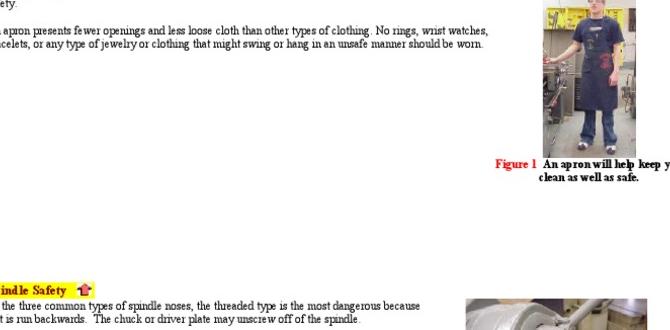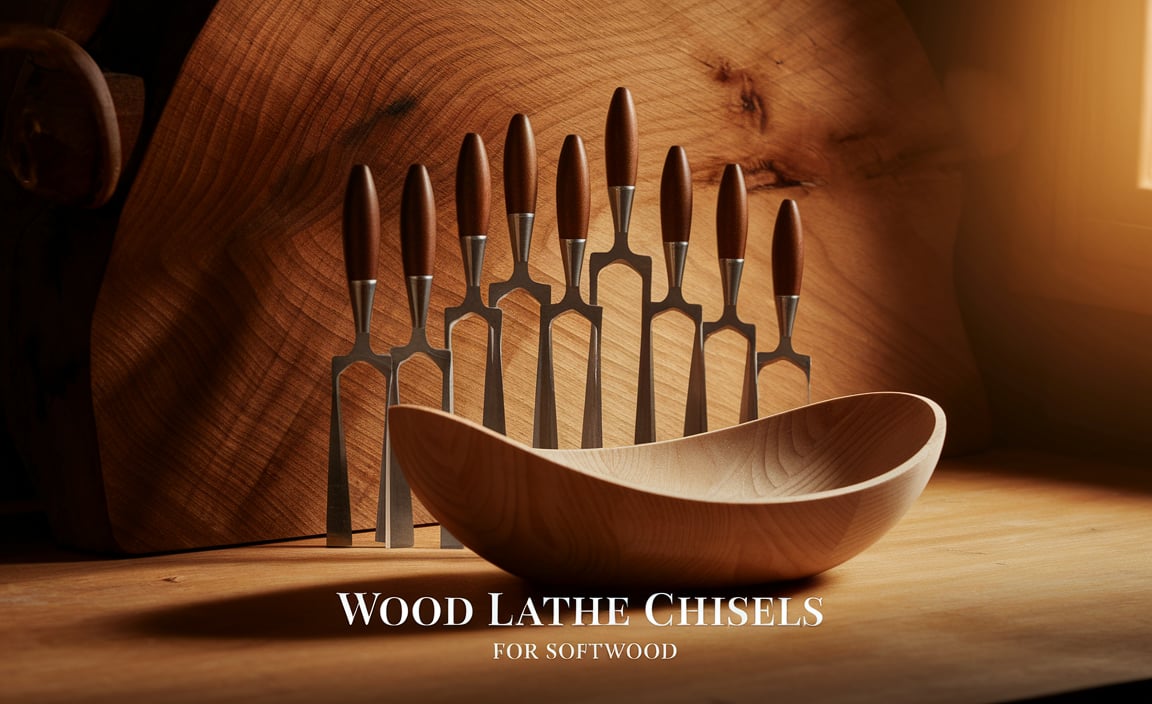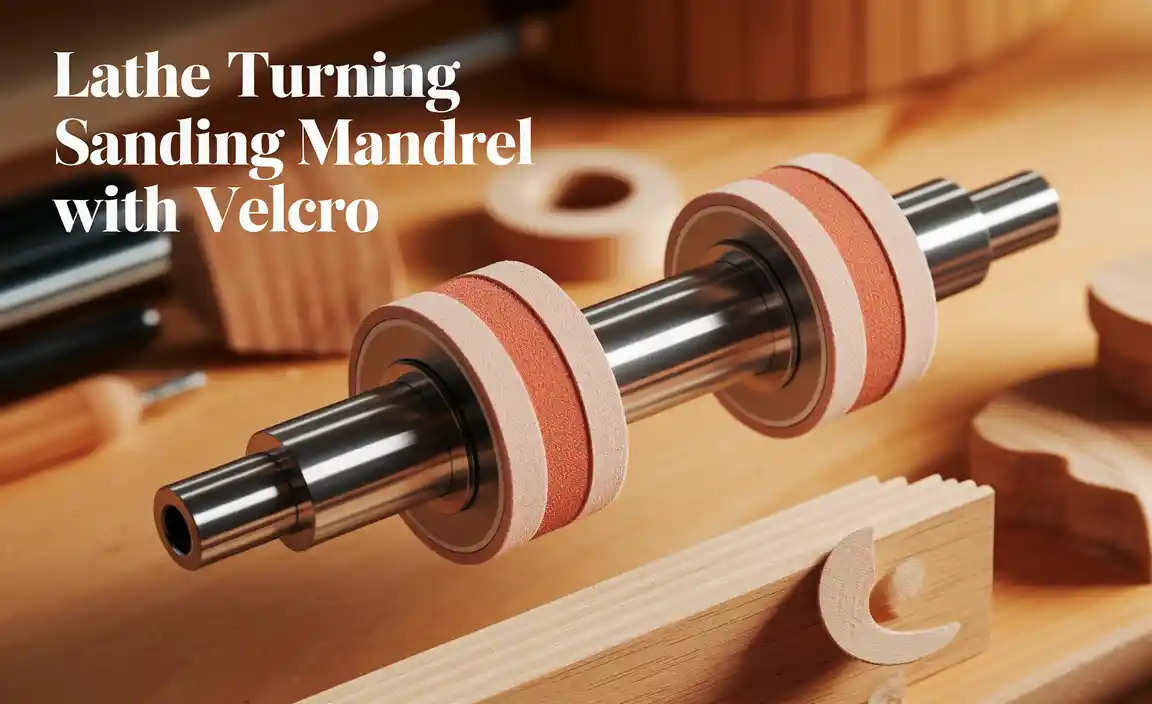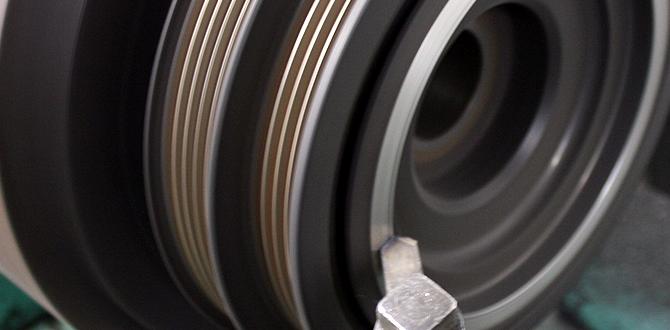Single Flute vs. 2 Flute End Mills for Cast Iron: The Beginner’s Guide
Choosing the right end mill for cast iron can feel tricky when you’re starting out. Do you need one flute or two? The answer really depends on what you’re trying to achieve. We’ll break down exactly how each type performs in cast iron, helping you make the best choice for your project, every time. Let’s get milling!
Single Flute End Mill vs. 2 Flute: Essential Cast Iron Machining for Beginners
Hey there, fellow makers and machinists! Daniel Bates here from Lathe Hub. If you’ve ever looked at a block of cast iron and wondered how to shape it with an end mill, you’ve probably also scratched your head over the flute count. Single flute? Two flute? What’s the big deal, especially when tackling something as robust as cast iron? Don’t worry, it’s a common question, and understanding the difference is key to getting clean cuts and keeping your tools happy. We’re going to dive deep into the world of single and two-flute end mills specifically for cast iron. By the end of this guide, you’ll know exactly which one to grab for your next project, no more guesswork!
Cast iron is a fantastic material to work with – it’s strong, durable, and has a lovely heft. But it can also be abrasive and a bit unforgiving if you don’t use the right approach. This is where selecting the correct end mill becomes super important. Using the wrong one can lead to poor surface finish, chipped tools, and a frustrating machining experience. But fear not! We’re going to simplify this for you. We’ll explore what makes each type of end mill unique, how they perform in cast iron, and when to choose one over the other. Get ready to gain the confidence to tackle cast iron like a pro!
Understanding the Basics: What Are Flutes?
Before we pit the single flute against the two-flute, let’s quickly refresh what “flutes” are on an end mill. Think of them as the cutting edges or grooves that spiral around the body of the tool. These flutes are what actually shear away the material as the end mill rotates. The number of flutes, their angle, and their design all impact how the tool cuts, how much material it can remove, and the type of finish it leaves behind.
More flutes generally mean it can remove material more aggressively, but it also means there’s less space for chips to escape. Fewer flutes mean more chip clearance, which is crucial for preventing the tool from getting clogged and overheating, especially in certain materials. We’ll see how this plays out with cast iron.
Single Flute End Mills: The Cast Iron Specialist?
When you’re working with cast iron, you’ll often hear whispers about single-flute end mills being a go-to. There’s good reason for this. A single-flute end mill has just one cutting edge. This might sound limiting, but in the context of cast iron, it offers some significant advantages.
The biggest benefit is chip clearance. With only one flute, there’s a lot of open space for the chips that are being cut away from the cast iron to escape. Cast iron can produce very abrasive chips. If these chips get trapped between the cutting edge and the workpiece, they can act like sandpaper, rapidly dulling the tool and causing a poor surface finish. The generous chip room provided by a single-flute end mill helps to evacuate these chips efficiently, keeping the cutting zone cleaner and cooler.
When to Choose a Single Flute End Mill for Cast Iron:
- High Abrasiveness: Cast iron is tough on cutting tools. The improved chip evacuation reduces friction and heat, helping to extend tool life.
- Maximizing Chip Evacuation: When you need to hog out material or are cutting deep slots where chips can easily get stuck, a single flute is your best friend for keeping the work clean.
- Preventing Tool Clogging: In stringy or gummy materials (though cast iron isn’t typically gummy, its abrasive nature can cause chip packing), the extra space is invaluable.
- Cost-Effectiveness (Sometimes): For simple profiles or for hobbyists, a single-flute might be a more economical choice in some cases, though this varies greatly by manufacturer and specific tool.
Drawbacks of Single Flute End Mills in Cast Iron:
- Slower Material Removal Rate (MRR): With only one cutting edge, it generally takes longer to remove the same amount of material compared to a two-flute or multi-flute end mill. This means longer machining times if aggressive material removal is your goal.
- Less Stable Cutting: The cutting forces are concentrated on a single edge. This can lead to more vibration, especially in less rigid setups or when taking heavy cuts.
2 Flute End Mills: The Versatile Workhorse
Now let’s look at the two-flute end mill. This is a very common type of end mill, often considered a good all-rounder for many materials. When it comes to cast iron, a two-flute end mill can still be a perfectly viable option, especially for lighter cuts or finishing passes.
A two-flute end mill offers a balance. It has more cutting edges than a single-flute, which can potentially lead to a higher Material Removal Rate (MRR). It also provides some chip clearance, though less than a single-flute. For many general-purpose machining tasks in cast iron, a two-flute end mill can provide a good finish and reasonable cutting speeds.
When to Choose a 2 Flute End Mill for Cast Iron:
- Finishing Passes: After roughing out material with a more aggressive tool, a two-flute can be excellent for achieving a smooth surface finish.
- General-Purpose Slotting and Profiling: For lighter cuts or when you’re not removing a massive amount of material, a two-flute offers a good compromise between cutting efficiency and chip evacuation.
- When Chip Evacuation Isn’t a Major Concern: If you’re making shallow cuts or working in a setup with excellent coolant flow that helps flush chips, a two-flute can perform well.
- Cost: Two-flute end mills are widely available and can often be very competitively priced.
Drawbacks of 2 Flute End Mills in Cast Iron:
- Reduced Chip Clearance: Compared to single-flute, there’s less room for chips. This can be a problem in deeper cuts or if your coolant system isn’t robust enough, potentially leading to chip recutting and tool wear.
- Potential for Overheating: If chips aren’t evacuated properly, they can insulate the cutting edge, leading to increased heat and faster wear.
- More Vibration: With two cutting edges, the cutting forces are more continuous than with a single flute, which can sometimes lead to chatter or vibration, especially if the tool isn’t perfectly sharp or the cut is aggressive.
Direct Comparison: Single Flute vs. 2 Flute for Cast Iron
Let’s put them head-to-head for cast iron. Think of it this way: if cast iron is a tough, dusty construction site, which tool is better suited for the job?
The single-flute is like a specialized demolition tool. It’s great at breaking through tough stuff and has a wide opening to clear away all the debris (chips) quickly. It might not be the fastest for covering large areas, but it gets the job done cleanly and efficiently without getting clogged up. This makes it ideal for aggressive roughing where you need to get stock out of the way and need to ensure those abrasive chips don’t ruin your tool or your part.
The two-flute is more like a general-purpose builder’s tool. It can do many things reasonably well. It’s good for making precise cuts and can remove material a bit faster than a single flute in ideal conditions. However, it has less room for debris, so if you’re digging deep or the “dust” is particularly problematic, it might start to struggle or make a mess. It’s often better for finishing or less demanding cutting tasks in cast iron.
Here’s a table to summarize their performance characteristics in cast iron:
| Feature | Single Flute End Mill | 2 Flute End Mill |
|---|---|---|
| Chip Clearance | Excellent | Good |
| Material Removal Rate (MRR) | Lower | Higher (in ideal conditions) |
| Tool Life in Cast Iron | Generally longer due to better chip evacuation and less heat | Can be shorter if chip evacuation is poor |
| Surface Finish | Can be good, but may not be as fine as a dedicated finishing tool | Can be very good, especially for finishing passes |
| Vibration/Chatter Tendency | Lower (single, intermittent cut) | Higher (more continuous cut) |
| Best Use Case in Cast Iron | Roughing, deep slots, high volume removal, abrasive conditions | Finishing passes, shallow slots, general profiling, lighter cuts |
Key Factors for Machining Cast Iron
Beyond just the flute count, a few other things are crucial when you’re machining cast iron. These will help you get the best results, regardless of whether you choose a single or two-flute end mill.
1. Tool Material and Coating:
For cast iron, you’ll typically want to look for end mills made from:
- Carbide: This is often the best choice for cast iron due to its hardness and ability to withstand higher temperatures generated during machining.
- High-Speed Steel (HSS): While HSS can work for softer cast irons or very light cuts, carbide generally performs much better and lasts longer in abrasive cast iron.
Coatings can also make a big difference. For cast iron, coatings like:
- TiN (Titanium Nitride): A common, general-purpose coating that adds a bit of hardness and lubricity.
- TiCN (Titanium Carbonitride): Offers better wear resistance than TiN and is a good step up for tougher materials like cast iron.
- AlTiN (Aluminum Titanium Nitride): Excellent for high-temperature applications and very abrasive materials. This is often a top choice for machining cast iron.
You can learn more about tool coatings and their benefits at resources like the National Institute of Standards and Technology (NIST), which provides valuable insights into advanced manufacturing materials and processes.
2. Coolant and Lubrication:
This is non-negotiable when machining cast iron. You need effective cooling and lubrication. Why?
- Reduces Heat: Cast iron generates a lot of heat, which softens the tool and reduces its lifespan. Coolant dissipates this heat.
- Flushes Chips: As we’ve discussed, getting those abrasive chips away from the cutting zone is critical. Coolant helps achieve this, especially when combined with good chip clearance.
- Improves Surface Finish: Lubrication helps the cutting edge glide more smoothly, leading to a better finish.
Common options include:
- Flood Coolant: A continuous stream of coolant directed at the cutting zone.
- Mist Coolant: A fine spray of coolant and air, which can be effective and uses less fluid.
- Lubricants/Cutting Fluids: For very specific operations or when flood coolant isn’t feasible, a good quality cutting fluid applied directly can help.
For hobbyists, even using a high-quality cutting fluid with a pump system can make a world of difference.
3. Cutting Parameters (Speeds and Feeds):
These can be a bit intimidating at first, but they are essential for good machining. Generally, for cast iron:
- Surface Speed (SFM): You’ll often run carbide end mills for cast iron at moderate to high surface speeds. For example, around 250-500 SFM (surface feet per minute) is a common starting point for uncoated carbide, and you can often push this higher with good coatings and flood coolant.
- Chipload: This is the thickness of the material being removed by each tooth of the end mill. For cast iron, you generally want a moderate chipload. Too small, and you risk rubbing and generating heat without effectively cutting. Too large, and you risk overloading the tool or causing vibration. A good starting point for a 1/4″ or 1/2″ end mill might be around 0.003″ to 0.007″ per tooth.
Always consult the end mill manufacturer’s recommendations for specific speeds and feeds, as these vary based on the tool’s geometry, coating, and the specific grade of cast iron you are machining.
A great resource for learning about cutting parameters is the Sandvik Coromant website, which offers extensive tooling knowledge and calculators.
Step-by-Step: Choosing and Using the Right End Mill for Cast Iron
Let’s walk through a practical scenario. You have a block of gray cast iron and need to mill a square pocket of about 1 inch deep.
Step 1: Assess Your Goal
Are you trying to:
- Rough out material quickly? This is your heavy lifting phase.
- Achieve a smooth, precise finish? This is your refinement phase.
Step 2: Select Your Primary Roughing End Mill
For a 1-inch deep pocket in cast iron, you’ll be removing a significant amount of material. The abrasive nature of cast iron and the depth of the cut make chip evacuation critical. Therefore, a single-flute end mill is usually the ideal choice for the initial roughing passes.
- Choose a solid carbide single-flute end mill for cast iron.
- Consider one with an AlTiN coating for excellent heat and wear resistance.
- Use a tool diameter that is about 50-75% of the pocket width. For example, if milling a 1-inch square pocket, a 3/4″ diameter end mill and taking multiple passes is a good strategy. Don’t try to mill the entire 1-inch width with a 1-inch end mill in one go.
Step 3: Set Up Your Machine and Coolant
Ensure your milling machine is rigid. If you have a milling attachment for a lathe, make sure it’s securely mounted.
Set up flood coolant or a mist coolant system. Aim for a continuous flow to keep the tool and workpiece cool and to help flush chips.
Step 4: Determine Roughing Speeds and Feeds
Consult tool manufacturer data or use a carbide end mill calculator for cast iron. As a starting point:
- For a 1/2″ diameter, 1-flute carbide end mill with AlTiN coating:
- Surface Speed (SFM): Around 350-450 SFM. Let’s say 400 SFM for calculation.
- Spindle Speed (RPM): RPM = (SFM 3.82) / Diameter. So, (400 3.82) / 0.5 = 3056 RPM. Round to 3000 RPM.
- Chipload (ipt – inches per tooth): Around 0.005″ per tooth.
- Feed Rate (IPM – inches per minute): IPM = RPM Chipload Number of Flutes. So, 3000 0.005 * 1 = 15 IPM.
These are starting points. You might need to adjust based on how the cut sounds and feels.
Step 5: Make Roughing Passes
You’ll likely need to take multiple passes to reach your 1-inch depth.
- Depth of Cut (DOC): For roughing, you might choose a DOC of around 0.25″ to 0.50″ per pass, depending on your machine’s rigidity and the end mill’s flute length.
- Stepover: When milling a pocket wider than your end mill, you’ll also need a stepover. For roughing, 50-75% of the end mill diameter is common.
- Make shallow, high-







